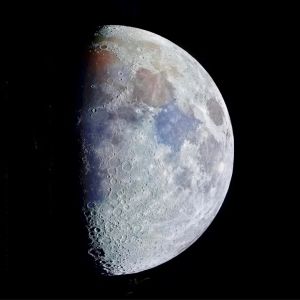ispace, a Japanese company, is reportedly ready to attempt another moon landing this week. It reported that it had slightly revised the landing time for its Resilience lunar lander in a statement made late June 3. The landing, in the Mare Frigoris region of the northern hemisphere of the near side of the moon, will now occur at 3:17 p.m. Eastern on June 5, seven minutes earlier than previously announced. ispace has said the tweak in the landing time came after engineers reviewed maneuvers performed May 28 to lower the spacecraft’s orbit to 100 kilometers. Hello from lunar orbit! 👋🌙 RESILIENCE status: nominal Distance above the Lunar surface: between ca. 100 km to 2,300 km Current orbital phase: Lunar orbiting phase, osculating between ca. 3,200 km/h to 6,800 km/h This photo was taken with the spot camera mounted on top of the… pic.twitter.com/Qgs31WtYg9 — ispace (@ispace_inc) May 16, 2025 ispace’s first attempt to land on the moon failed The Resilience lunar lander is ispace’s second attempt to land on the moon. It launched in January on Falcon 9, the same craft that carried Firefly Aerospace’s Blue Ghost 1 lunar lander. However, while Blue Ghost made a successful landing on the moon March 2, Resilience has taken a longer, low-energy trajectory, traveling as far as 1.1 million kilometers from the Earth before returning and entering lunar orbit on May 6. ipace’s first lander, similar in design to Resilience, crashed while it was attempting a landing in April 2023. The company concluded that the landing accident may have been caused by a software problem that made it appear that the spacecraft had reached the surface when it was still at an altitude of five kilometers. It is a mistake that Takeshi Hakamada, founder and chief executive of ispace, has said they have learned from. “Since that time, we have drawn on the experience, using it as motivation to move forward with resolve,” Hakamada said in a June 4 statement. “We are now at the dawn of our next attempt to make history.” ispace’s lunar lander will be carrying a payload The lander is reportedly stacked with several payloads from Japanese companies and a Taiwanese university, including a water electrolyzer, a food production experiment, and a deep space radiation problem. The lander also has a “commemorative alloy plate” from Bandai Namco Research Inc., the research arm of Japanese entertainment company Bandai Namco . ispace has stated in financial reports that the commercial payloads on the lander have a combined contract value of $16 million. Aside from those payloads, Resilience also carries a small rover, Tenacious, developed by ispace’s European subsidiary, which is equipped with cameras and a shovel that will collect lunar regolith. Tenacious also carries an art project called Moonhouse. It was developed by a group led by Swedish artist Mikael Genberg and is a model of a typical Swedish house, measuring 12 by 10 by 8 centimeters and weighing 100 grams. The rover will deploy the Moonhouse onto the surface, ideally in a location that will allow it to be photographed with the Earth in the background. The Moonhouse was put together using 3D-printing technologies in aluminum and uses customized space-rated red paint. Once the team locates an appropriate area for the Moonhouse, the rover will release the house there, dropping eight centimeters to the surface. That small exercise required extensive testing at a European Space Agency facility with a simulated lunar landscape. “We’ve been as worried about these last eight centimeters as ispace is about their landing,” said Emil Vinterhav, head of the project’s technical team. While Genberg declined to disclose the cost of the Moonhouse and getting it to the moon, he said it was comparable to the cost of a “really nice house with a good pool” on Earth. In the future, ispace will put out more lunar landers. The company’s U.S. subsidiary is building the Apex 1.0 lander for what it calls Mission 3, a lander for a NASA Commercial Lunar Payload Services (CLPS) program mission led by Draper. That mission is now scheduled to launch in 2027 after a change in engines for the lander, announced May 9, pushed the mission back from 2026. Meanwhile, in Japan, ispace is also building a separate lander for Mission 4, and it is scheduled for 2027. Cryptopolitan Academy: Want to grow your money in 2025? Learn how to do it with DeFi in our upcoming webclass. Save Your Spot


















